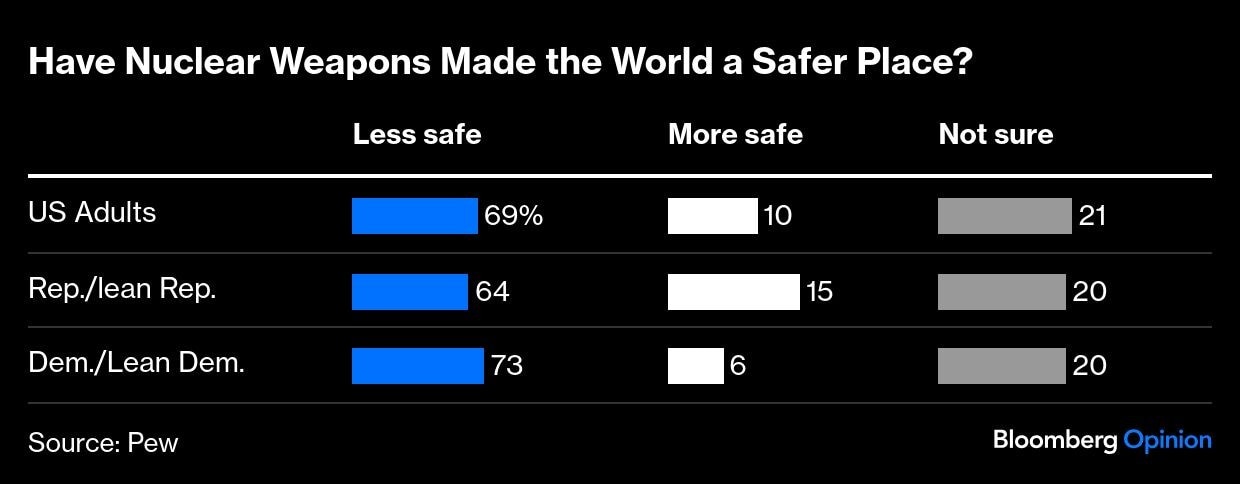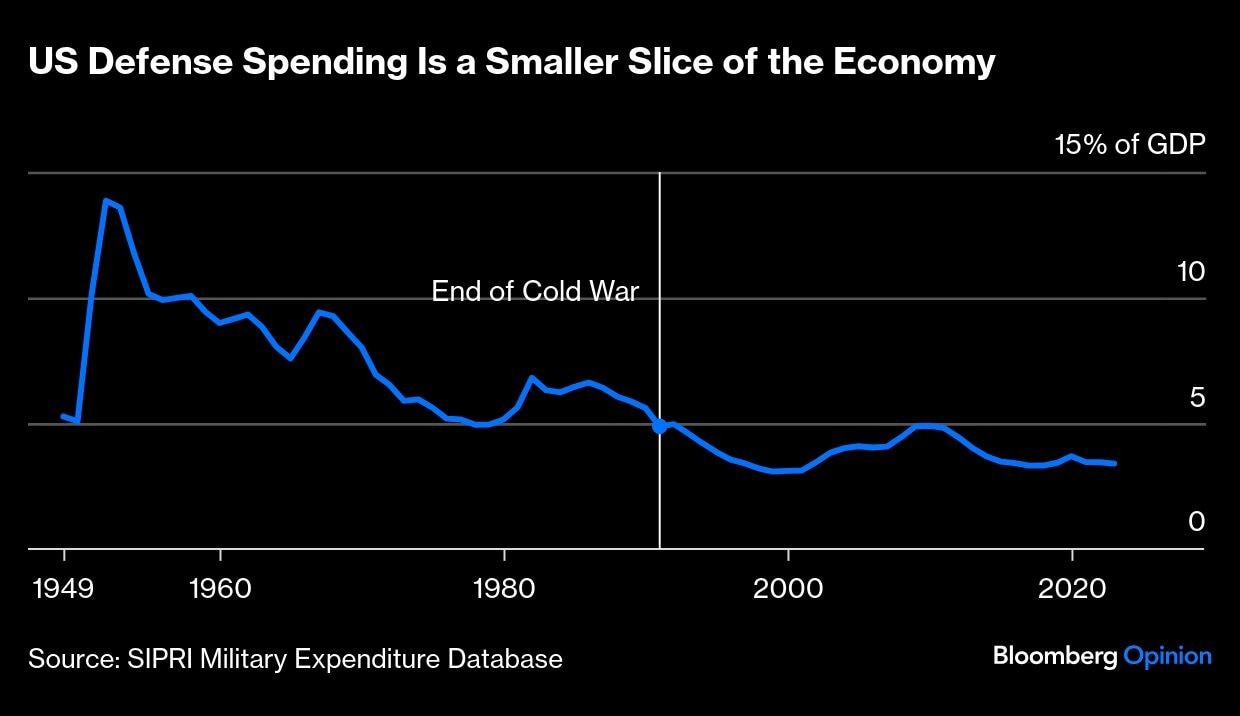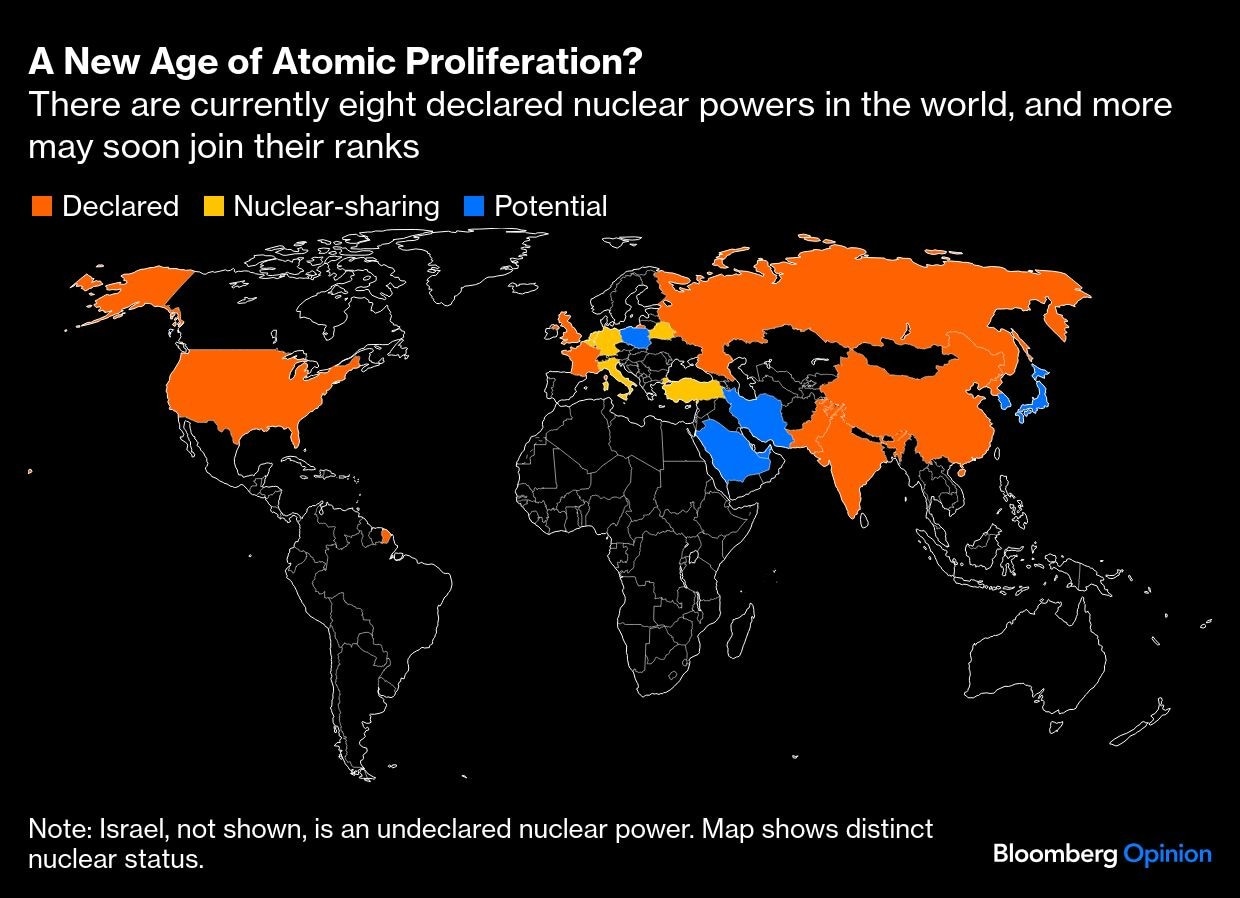The dropping of the atomic bomb on Hiroshima 80 years ago this week is something to commemorate but not celebrate. It was also the beginning of a new era: the Atomic Age. Growing up in the latter stages of the Cold War, my generation didn't live with the sense of menace and the Bert the Turtle duck-and-cover drills baby boomers endured. But both cohorts were blessed by the absence of a large-scale war, conventional or nuclear, between the US and the Soviet Union.
Which brings up an 80-year-old question: Did the development of atomic weapons keep the peace during the Cold War? And if so, what accounts for this paradoxical result? The simple answer is the unsatisfying one: It's complicated.
Harry Truman, the president responsible for Hiroshima, insisted that the bomb would "become a powerful and forceful influence toward the maintenance of world peace." Recent polling by Pew suggests that view is out of fashion: 69% of US respondents said the development of nukes "has made the world less safe."


But maybe that's the wrong question. After all, a weapon isn't a sentient thing; the real question is whether the people in charge are wielding it wisely. (In this case, not using it at all.) And by "wisdom," I don't mean just believing that a nuclear war, while not unthinkable, is untenable. Rather, real wisdom is recognizing that avoiding a nuclear winter required a remarkably astute series of strategic shifts by American leaders over the 45 years we lived on the brink.

We often view Cold War strategy through the catchy phraseology of the early theorists of atomic conflict, many of them working at the RAND Corporation. They included the economist Thomas Schelling, a specialist in game theory, and the physicist Herman Kahn, who popularized the idea of "mutual assured destruction" - the idea that the horrific consequences of massive nuclear war to each side would keep one from happening.
Maybe. Gameplay may be a good way of considering economic decision-making, but it's risky for geostrategy: It is traditionally based on the idea that neither side has an incentive to change strategy unilaterally and can assume the nations are "playing" a zero-sum nuclear game. That's not how policy and statecraft are played.
Mutual assured destruction has a stronger grip on reality, but, in addition to its poor branding, it was widely looked at in static terms: the perpetual presence of civilization-ending weapons poised on a hair-trigger. That model doesn't hold up, for example, if even one side thinks the escalatory ladder can end with the use of lower-yield, tactical "battlefield" weapons.
Abstract theories are all well and good, but let's face it: politics, diplomacy, military strategy, soft power, even luck - these are the product of actions by fallible, flesh-and-blood humans who change their minds and adjust to new realities, as do their successors with the status quo they inherit. So, if we want to say that a mass of nuclear weapons kept the peace for decades, we need to focus on the men (alas, they are all men, of course) in charge, and not the missiles.
The US approach to deterrence had almost as many monikers as presidents over those 45 years: massive retaliation, New Look, Flexible Response, strategic stability, Madman Theory, "limited" nuclear war, and so forth. Some overlapped and all contributed to the nuclear balance, but none defined it. Rather, taken together, they show that if nukes kept the peace, it was only through constant adaptation based on shifting geopolitics, advances in conventional military technology, generational change, domestic politics, and policy conflicts (i.e., bureaucratic backstabbing).
Bookshelves and hard drives groan with the mass of debates over that history, which defies easy encapsulation. But for our purposes, it's worth looking at two presidencies that came at the tail end of the Cold War: those of Jimmy Carter and Ronald Reagan.
Carter, a former Navy nuclear engineer, came into office in 1977 as a nuclear peacenik: In an address to the United Nations General Assembly, he called for "a world truly free of nuclear weapons" and warned that that should proliferation accelerate, "the world that we leave our children will mock our own hopes for peace." And he tried, but failed, to reach a modest arms limitation deal with the Soviets known as SALT II.
Yet how to reconcile this with the president who pressed Congress to approve development of a "neutron bomb" that, instead of creating a massive blast, would release vast amounts of lethal radiation? (Equally germane: He shelved the program because of politics - equivocation among the European allies.)
In addition, Carter (guided by his Secretary of Defense, the nuclear physicist Harold Brown) released a series of presidential directives on the modernization of the nuclear arsenal. One was the controversial PD-59, which outlined the "countervailing strategy" - basically a war plan - for a nuclear conflict with the Soviet Union. By targeting the USSR's leadership and military installations rather than population centers, it broke from MAD. It also showed how Carter quickly learned that his ambitions to abolish nukes were futile, and that the threat of a limited nuclear war might be a better deterrent than stockpiling civilization-ending ICBMs unlikely to be fired (at least on purpose).
This new doctrine was of a piece with Carter's support of the Pentagon's broader "second offset" doctrine for conventional forces, a plan to focus less on the quantity of US hardware and manpower and more on the quality made possible by the massive US advantage in electronics, computing, and manufacturing. The US needed the bomb less and less; the risk was that the USSR was increasingly dependent on it.
Then there is the strange case of Ronald Reagan. As much as his opponents painted him as a warmonger, he had been in favor of a ban on atomic weapons as far back as 1945, when Warner Bros. studio blocked him from helping to lead a Hollywood antinuclear rally. He came into office with the mindset that the concept of mutual assured destruction was abhorrent.
Reagan's strategy was stick and carrot. Stick-wise, he ramped up the second offset, creating what the Washington Post (unfairly) described as "a war-machine economy in a time of uneasy peace." He pushed through the development and fielding of Peacekeeper ICBM missiles, still the backbone of America's ground-based deterrent.

Perhaps his most significant, if controversial, success was achieving a plan started under the Carter administration to position in allied territory - including West Germany - US Pershing II and ground-launched cruise missiles with tactical nuclear warheads, ostensibly to counter the Soviets' new SS-20 ballistic system. More than a million people protested the plan across Europe in October 1983, but Reagan read the crowd and kept the fractious coalition of UK Prime Minister Margaret Thatcher, German Chancellor Helmut Kohl, and French President Francois Mitterand in line. The great historian Timothy Garton Ash once told me that the combination of hard and soft power, personified by those missile deployments and the Helsinki Accord human-rights initiative, broke the back of the Soviet Union.
The carrots proffered to Moscow were baby-sized, reflecting the sclerosis of the Soviet menace and the military, economic, and cultural dominance of the West. Reagan's astute dealings with Soviet leader Mikhail Gorbachev, who recognized that he had a poor hand to play, achieved first the Intermediate-Range Nuclear Forces treaty (INF) in 1987 and set the stage for the first Strategic Arms Reduction Treaty (START), completed in 1991 under President George HW Bush.
Which brings us to the most discussed and perhaps misunderstood initiative of the Reagan years: the Strategic Defense Initiative, or "Star Wars" as its detractors called it. The space-based system was intended as a shield to defend the US from Soviet ICBMs, insulating it from the biggest nuclear threat. In the minds of Reagan and his advisers, it was the ultimate peacemaker: If the Soviets were unable to hit the US with massive nuclear blasts, there would be no cause to hit back. Opponents derided its technological infeasibility (a good point) and said it would upend the balance of power in the nuclear age - a less evident conclusion, and an odd one from a crowd that decried the status quo of equilibrium under mutual assured destruction.
As we know, SDI never happened. And with the fall of the Soviet Union in 1991, we entered what we hoped would be a sort of post-nuclear global order. Until now.
With Russian President Vladimir Putin threatening to use battlefield weapons in the Ukraine conflict and potentially withdrawing from the INF agreement, North Korea refining its ballistic missiles, and China building a world-class arsenal in world-record time, we have reached what my colleague Hal Brands calls the New Nuclear Age.

So, in this new cold war, how does the US re-deploy the lessons of the old one, and adapt to changing conditions in a way that deters rivals without inflaming tensions?
Here are a handful of suggestions to start with:
- Encourage allies, including South Korea, Poland, and, sadly, on this anniversary, Japan, to begin research and development of their own nuclear weapon programs - but not necessarily to build a bomb until we are clear on the China-Russia reaction.
- Make tactical weapons on nuclear-powered submarines the centerpiece of deterrence. Unfortunately, China's rise makes it necessary to upgrade America's intercontinental missiles (part of a $1.2 trillion program begun in the Barack Obama administration), but with air forces increasingly vulnerable to drones and other technologies, the new B-21 long-range bomber program should be capped at 100 under contract.
- Try to bring China into a global nonproliferation or arms control regime - an effort almost certainly doomed to failure, but that burnishes America's good-guy credentials. Also, try to save the START treaty with Russia before it expires next year - also unlikely to happen, but worth trying.
- Conclude a formal defense treaty with Saudi Arabia (and the United Arab Emirates) in exchange for recognition of Israel. This would keep the Arab states from pursuing their own nuclear programs while keeping Iran's in check. But that's on hold until the war in Gaza is resolved.
- Forget President Donald Trump's vaunted "Golden Dome" nationwide missile defense, which is no more technologically viable than its SDI predecessor. Instead, invest far more into the West Coast Ground-Based Midcourse Defense system designed to shoot down a North Korean rogue attack, thereby advancing technology for a nationwide shield.
Most importantly, the nation needs to survive Trump's efforts to undermine the US-led world order - and decades of deterrence strategy - and to keep adapting its nuclear policy to the changes on the global chessboard. Human agency remains the antidote to technological determinism. If a future state of play engineered by smart policymaking entails killing off any one of these five prescriptions, nobody will be happier than me.
(Tobin Harshaw is a Bloomberg Opinion senior editor and columnist on national security and military affairs.)
Disclaimer: These are the personal opinions of the author
(This story has not been edited by NDTV staff and is auto-generated from a syndicated feed.)



